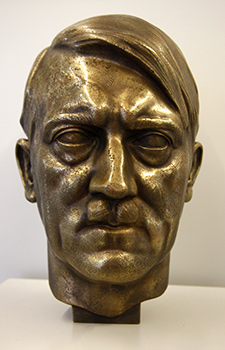 Adolf Hitler, the fascist leader responsible for millions of deaths through genocide and world war, has long been suspected of having Parkinson’s Disease toward the end of this life.
Adolf Hitler, the fascist leader responsible for millions of deaths through genocide and world war, has long been suspected of having Parkinson’s Disease toward the end of this life.
It was the disease that helped bring about crucial mistakes leading to his downfall, according to a new study from the University of Pittsburgh.
Parkinson’s is noted for its physical symptoms, including reduction of voluntary-movement control, rigidity and uncontrollable tremors. But it also influences personality – and Hitler’s blunders and even genocidal bloodlust might partly be explained by his diseased brain, according to the new paper, published in the journal World Neurosurgery.
“We purport that Germany’s defeat in World War II was influenced by Hitler’s questionable and risky decision-making and his inhumane and callous personality, both of which were likely affected by his Parkinson’s condition,” they concluded.
“Likewise his paranoid disorder marked by intense anti-Semitic beliefs influenced his treatment of Jews and other non-Germanic peoples. We also suggest that the condition played an important role in his eventual political decline,” they added.
One of the best pieces of evidence that Hitler had Parkinson’s were the videos taken near the end of his life, which show his trembling hands and vacant expressionless stare – both of which can be attributed to Parkinson’s.
But previous studies have noted that SS doctors diagnosed the Nazi leader with the disease during the course of the war. A 1999 paper in the European Journal Of Neurology found that it was the combination of inflexible opinions and impulsive outbursts that resulted in his strategic blunders. Those mistakes included his invasion of the Soviet Union in 1941, his inability to adapt to the changing conditions at Stalingrad in late 1942 and his slow response to the D-Day landings in 1944 that led to his military defeat.
In the 1999 study, researchers cited medical records from 1944 and 1945 that described the German leader as having lost “his mental flexibility.”
Source: biosciencetechnology









